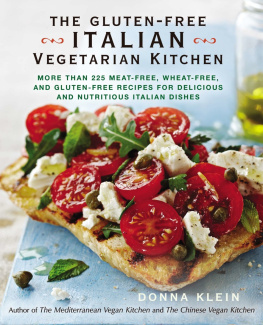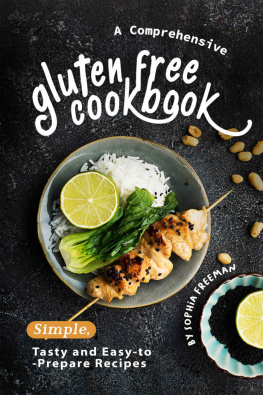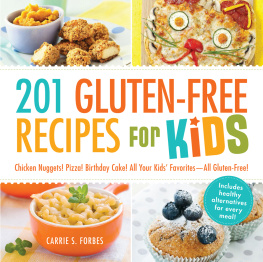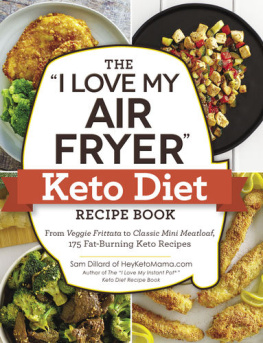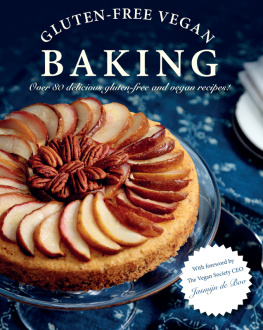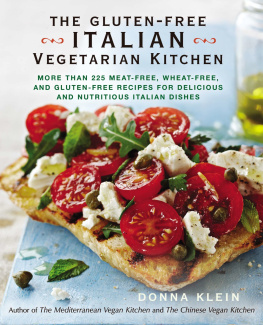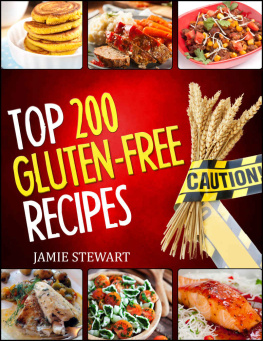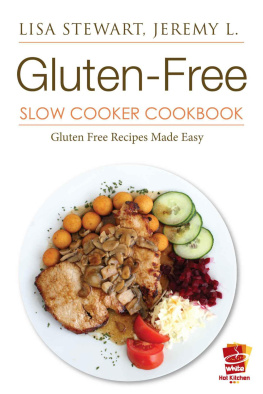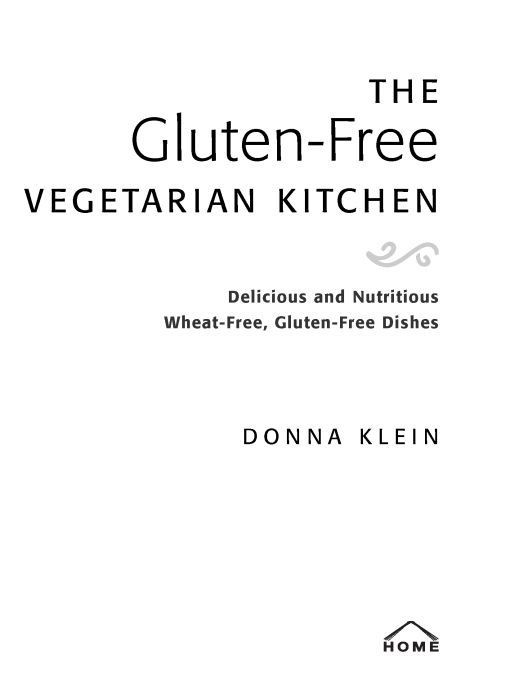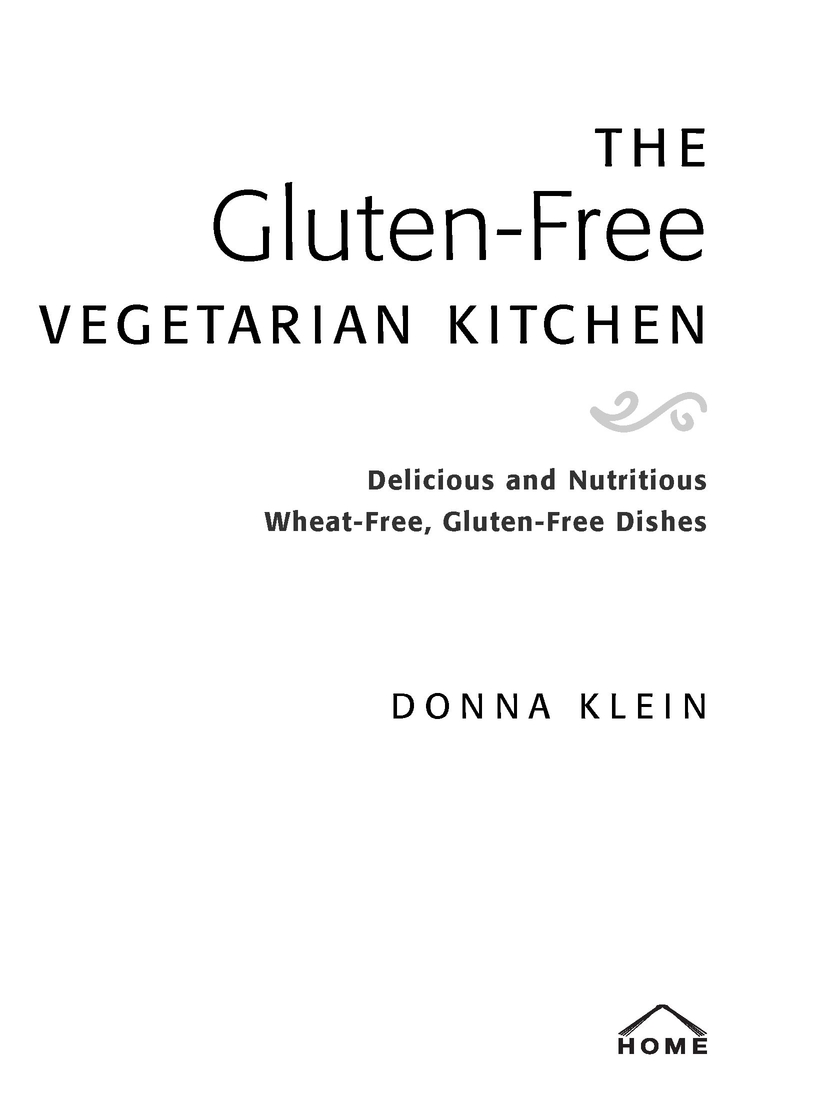Table of Contents
For Marilynn Klein, who inspired this book
ACKNOWLEDGMENTS
As always, my sincere thanks go to the following people: To my literary agent, Linda Konner, for her ongoing encouragement and support. To John Duff, and to Jeanette Egan, for her first-rate editing skills. To my daughters, Emma and Sarah, for taking time from their busy lives to help with the huge task of recipe testing and retesting.
And to my dog, Trevor, for continuing to be my most enthusiastic taste tester and giving me cause to pause for a walk each day.
INTRODUCTION
The Gluten-Free Vegetarian Diet
Life without wheat can be a challenge for anyone. For vegetarians with celiac disease who must avoid all foods containing glutenwheat, rye, barley, and usually oats, due to cross contaminationfollowing a gluten-free diet can initially be downright daunting. No more bread, pasta, pizza, cookies, cake, pie, pancakes, muffins, biscuitsthe list seems endless. But fortunately, man (or woman) does not live by bread alone. Indeed, there is a wide variety of vegetarian foods that do not contain glutenall fresh fruits and vegetables, eggs and most dairy products, beans and legumes, nuts and seeds, rice and corn, and the list goes on. With the inclusion of breads and pastas made with special gluten-free flours, vegetarians with gluten intolerance can eat a well-balanced diet. The aim of this cookbook is to provide you with a selection of healthy, mouthwatering recipes that will leave you feeling full and satisfied.
What Is Gluten?
Gluten is a mixture of proteins found in many cereal grains. It is gluten that gives bread its elasticity and cakes their spring. For those with celiac disease, the destructive gluten is the protein found in wheat, barley, malt, and rye. Oats are gluten-free but are not recommended due to the high risk of cross contamination. There are glutens in rice and other grains such as millet, but these are not harmful.
What Is Celiac Disease?
Celiac disease is a genetic, autoimmune disease that interferes with the digestion process. When a celiac person eats foods that contain gluten, the immune system responds by damaging the villi in the small intestine. Villi are thousands of tiny hairlike protuberances that line the small intestine. Their job in the digestion process is to extract nutrients from foods that we eat. The villi in a person who has celiac disease have dropped off or have become flattened. The villi are unable to absorb the needed nutrients for the body, causing malabsorption of food and nutrients.
Wheat Allergy Versus Celiac Disease
It is generally believed that celiac disease is more common than wheat allergy, which can often mask the former. A wheat allergy occurs when the body perceives wheat as an invader and produces an allergic reaction. Symptoms of wheat allergy can include eczema, sneezing, increased acne, and abdominal bloating. It is more likely to affect young children and can be temporary. Celiac disease, on the other hand, is due to a permanent intolerance to gluten.
The main effect of celiac disease is damage to the small intestine and the resulting malabsorption of nutrients. Symptoms can include diarrhea, vomiting, cramping, nausea, weight loss, anemia, chronic tiredness, osteoporosis, thyroid problems, diabetes, stunted growth, and infertility.
GLUTEN-FREE FOODS
Beans and lentils, dried
Buckwheat and buckwheat groats
Cellophane/mung bean-thread noodles
Corn and cornmeal
Dairy productsmilk, cream, butter, plain yogurt, most cheeses
Eggs
Fruits and vegetables
Herbs, fresh, and plain/individual spices without additives
Jams, jellies, and preserves
Millet
Nuts and seeds (plain, without seasoning)
Oils and shortening
Quinoa
Rice and wild rice
Rice bran
Rice noodles
Soy and tofu
Sugar, honey, maple syrup
Vinegars (except malt vinegar)
Yeast, fresh and dried
NATURALLY GLUTEN-FREE ALTERNATIVES
Arrowroot
Buckwheat flour
Carob flour
Chestnut flour
Chickpea flour
Cornmeal and polenta
Cornstarch
Linseed
Millet flour
Potato flour
Potato starch flour
Quinoa flour
Rice flour
Sorghum
Soy flour
Tapioca flour
Xanthan gum
CEREALS AND GRAINS THAT CONTAIN GLUTEN
Barley
Oats (due to cross contamination)
Rye
Spelt
Wheat
FOODS AND DRINKS THAT MAY CONTAIN HIDDEN GLUTEN
Baking powder
Beer, lager, stout, and ale (all made from grains; some gluten-free beers, made using sorghum, are available)
Bouillon cubes and powder, canned broths and soups (especially creamed varieties)
Breakfast beverages (such as Ovaltine)
Cereals (including cornflakes)
Cheese
Cream, cottage, and ricotta cheeses (especially reduced-fat varieties)
Shredded and crumbled (may contain flour to prevent clumping)
Veined ones such as Roquefort and blue cheese
Cheese spreads and processed cheese foods
Chili powder (may contain flour to prevent clumping)
Coffees, flavored
Corn tortillas (may also contain regular flour)
Curry powder (may contain flour to prevent clumping)
Dried fruits (may be dusted with flour to prevent sticking)
French fries, frozen (flour may be present to keep them white)
Ice cream and frozen yogurt (especially reduced-fat varieties)
Margarine and butter spreads
Mustard powder
Mustard, prepared, and ketchup
Nondairy creamers
Nuts, dry-roasted
Potato and tortilla chips, flavored
Salad dressing and mayonnaise (especially reduced-fat or light varieties)
Seasoning mixes
Sour cream (especially reduced-fat or light varieties)
Soy sauce
Vanilla extract and other flavorings
White pepper (may be bulked with flour)
Yogurt (all reduced-fat or flavored varieties)
Note: The labels on all processed and canned foods should be checked carefully before each use. What might be safe one time might not be the next, as manufacturers tend to change their products periodically. When in doubt, contact the manufacturer directly.
FOODS OR FOOD LABELING TERMS THAT INDICATE OR SUGGEST THE PRESENCE OF GLUTEN
Barley starch
Binder
Bran
Bulgur, cracked wheat
Caramel color
Cereal
Cereal protein
Couscous
Dextrin (unless derived from corn, potato, arrowroot, rice, or tapioca)
Durum wheat
Emulsifier
Fillers
Flour (unless made with pure rice flour, corn flour, potato flour, or soy flour)
Hydrolyzed plant protein (HPP) (unless derived from soy or corn)
Hydrolyzed vegetable protein (HVP) (unless derived from soy or corn)


